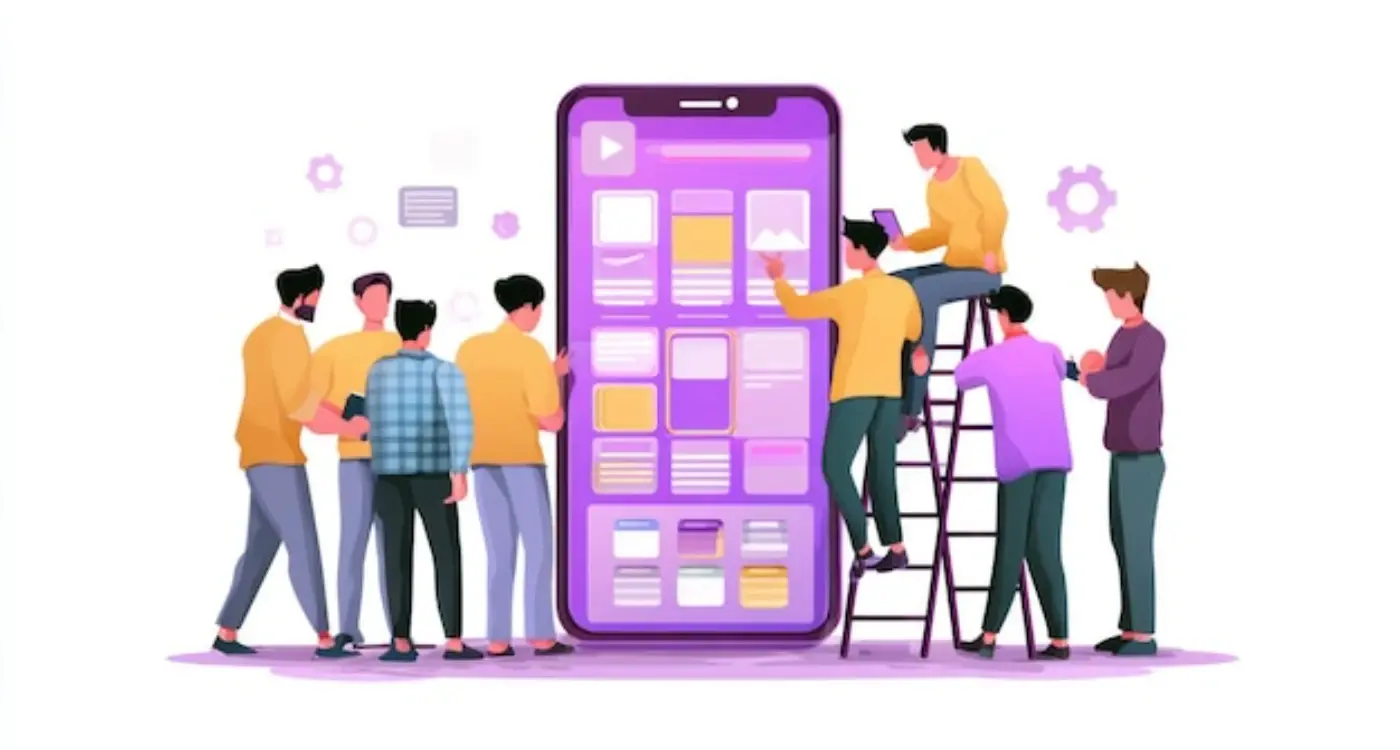Can I Switch Development Teams For App Maintenance?
Last year I got a call from the founder of a fitness tracking mobile app that had been running for three years. His development team had just announced they were shutting down their agency, leaving him with over 150,000 active users and no one to fix bugs or add new features. He was panicking—understandably so. "Can I even switch to a new team without breaking everything?" he asked me. The short answer? Yes, absolutely.
Switching development teams during app maintenance is more common than you might think. Companies do it all the time for various reasons—budget constraints, poor performance, team availability, or sometimes the original developers simply move on to other projects. The good news is that a vendor change doesn't have to mean disaster for your mobile app or its users.
The key to successful maintenance continuity isn't avoiding team changes—it's knowing how to handle them properly when they happen.
What this founder discovered (and what many app owners learn) is that with proper planning and the right approach, switching teams can actually improve your app's future. New developers often bring fresh perspectives, updated skills, and sometimes better processes. The trick is managing the transition smoothly so your users never notice the change happening behind the scenes.
Why Teams Switch During App Maintenance
I've worked with dozens of companies over the years who've made the switch from one development team to another during their app's maintenance phase. The reasons are pretty varied, but there are some clear patterns that keep coming up.
Cost is the biggest driver—hands down. Your original development team might have charged premium rates during the build phase, which made sense when you needed their expertise. But now that your app is live and running smoothly, those high monthly retainers start to feel painful. Many businesses find maintenance teams that charge 30-50% less for the same ongoing work.
Common Reasons for Making the Switch
- Original team's rates are too high for long-term maintenance
- Poor communication or slow response times to bug fixes
- Team lacks expertise in newer technologies your app needs
- Business relationship has soured over time
- Original team has moved focus to other types of projects
- Your app needs specialist knowledge the current team doesn't have
Sometimes the switch isn't about money at all. I've seen cases where the original team just wasn't responsive enough—taking days to respond to critical bugs or being hard to reach when issues cropped up. When your app is generating revenue, every hour of downtime matters.
The bottom line? Most switches happen because the current arrangement isn't working for your business anymore, whether that's financially or operationally.
What Happens When You Change Development Teams
When you switch development teams for your mobile app maintenance, you're looking at a complete handover of everything that makes your app tick. The new team needs access to your source code, deployment credentials, third-party service accounts, and all the technical documentation—if it exists. This isn't just copying files from one computer to another; it's transferring years of institutional knowledge about how your app was built and why certain decisions were made.
The first thing that happens is a technical audit. Your new team will spend time understanding your app's architecture, identifying any potential issues, and figuring out how everything connects together. They'll need to recreate development environments, understand your deployment process, and get familiar with any custom integrations you're using.
What Gets Transferred During a Vendor Change
- Source code and version control access
- App store credentials and certificates
- Server access and hosting accounts
- Third-party API keys and service accounts
- Technical documentation and project notes
- Database backups and configurations
The reality is that some knowledge will be lost in translation. The original team knew shortcuts, workarounds, and the reasoning behind certain code choices that might not be documented anywhere. Your new team will need time to rediscover these nuances, which can slow down initial maintenance work.
Document everything before you switch teams. Even basic notes about why certain features work the way they do can save your new team hours of detective work.
Getting Your New Team Up to Speed
Right, so you've chosen your new development team—now comes the fun part of actually getting them up to speed with your app. This is where things can get a bit messy if you don't handle it properly, and trust me, I've seen plenty of handovers go sideways over the years.
Documentation Is Your Best Friend
Your old team should provide comprehensive documentation about how your app works. This includes technical specifications, code comments, database structures, and any custom features they built. Without this, your new team will spend weeks just figuring out what does what—and that's time you're paying for.
The new team will need access to everything: your app store accounts, development environments, third-party service accounts, and analytics platforms. Make sure passwords are changed after the handover for security reasons, but don't do it too early or you'll lock everyone out!
Expect a Learning Curve
Even with perfect documentation, your new team will need time to understand your app's quirks and special features. Budget for at least 2-4 weeks of familiarisation time before expecting major updates or fixes. During this period, they'll be studying the codebase, testing features, and asking lots of questions about why certain decisions were made.
The good news? Once they're up to speed, a fresh pair of eyes often spots improvements the previous team missed.
Keeping Your App Running During the Switch
The biggest worry most business owners have when switching development teams is whether their mobile app will keep working properly. Nobody wants their users opening the app to find broken features or crashes—that's a nightmare scenario that can damage your reputation and lose customers.
The good news is that switching teams doesn't mean your app has to break or go offline. Your current app will keep running exactly as it did before the vendor change. Apps don't magically stop working just because new developers are looking at the code. The tricky bit is making sure any updates or fixes can still happen smoothly during the handover period.
Planning for Zero Downtime
Smart businesses plan their team switch around their app's natural update cycle. If you usually release updates monthly, time the transition so both teams can work together on at least one release. This means your old team can guide the new developers through the deployment process whilst everything is still fresh in their minds.
The worst time to switch teams is right before a major feature launch or during your busiest season
Most maintenance continuity issues happen because businesses rush the handover process. Give your new team time to understand your app's architecture and testing procedures before they take full responsibility. A few extra weeks of overlap between teams is much cheaper than dealing with broken app functionality later.
The Real Cost of Switching Teams
Let's talk numbers—because switching development teams isn't just about finding new people, it's about your budget too. I've watched businesses get caught off guard by the true cost of making this change, and it's rarely just what you pay the new team.
The biggest expense? Time. Your new team needs weeks (sometimes months) to understand your app's code, your users, and your business goals. During this period, you're paying for their learning curve whilst your app maintenance slows to a crawl. Bug fixes that used to take days might now take weeks.
Hidden Costs You Might Not Expect
- Documentation creation if your previous team left things messy
- Code audits to understand what you've actually got
- Potential app store resubmissions if developer accounts change
- Lost momentum on planned features and updates
- Emergency fixes if something breaks during the handover
Then there's the opportunity cost. Every day your new team spends figuring things out is a day they're not improving your app or adding new features that could grow your business.
When It's Worth the Investment
Don't let these costs scare you off completely. If your current team is genuinely holding you back—missing deadlines, poor communication, or declining code quality—the switch often pays for itself within six months through better productivity and fewer headaches.
How to Make the Change Go Smoothly
Right, so you've made the decision to switch development teams—now what? The good news is that with proper planning, your mobile app maintenance can continue without major hiccups. I've guided dozens of companies through this process and there are some tried-and-tested steps that make all the difference.
Start by creating a detailed handover document before your old team leaves. This should include everything from login credentials to deployment procedures; the more comprehensive, the better. Your existing team knows your app inside out, so milk that knowledge whilst you still can. Don't forget to include any quirks or workarounds they've discovered along the way.
Communication Is Your Best Friend
Keep all stakeholders in the loop throughout the transition. Your users don't need to know the technical details, but your internal team should understand timelines and potential disruptions. Set realistic expectations about response times during the first few weeks—your new team will need time to get familiar with your codebase.
Schedule weekly check-ins with your new team for the first month. This catches any issues early and helps build confidence on both sides.
Plan for a gradual transition rather than an abrupt handover. If possible, overlap the teams for a week or two. This allows for direct knowledge transfer and gives your new team a safety net whilst they find their feet with your mobile app's unique requirements.
Conclusion
Switching development teams during app maintenance isn't something to take lightly—but it's absolutely doable when done right. I've seen businesses make this transition successfully dozens of times, and whilst there are challenges, none of them are insurmountable.
The key is preparation. Get your documentation sorted, plan your handover properly, and don't rush the process. Yes, it'll cost you more upfront; yes, there'll be a learning curve for your new team. But if your current arrangement isn't working, staying put often costs more in the long run.
What matters most is finding a team that understands your app's purpose and can maintain the quality your users expect. Technical skills are important, but so is communication—you need a team that'll keep you informed and respond when issues arise.
The mobile app world moves fast, and sometimes changing teams is exactly what your app needs to stay competitive. Just make sure you do it for the right reasons and with the right planning. Your app—and your users—will thank you for it.
Share this
Subscribe To Our Learning Centre
You May Also Like
These Related Guides

What Are the Best Practices for Managing Remote App Development Teams?

What Strategies Work Best for Managing App Development Teams?



